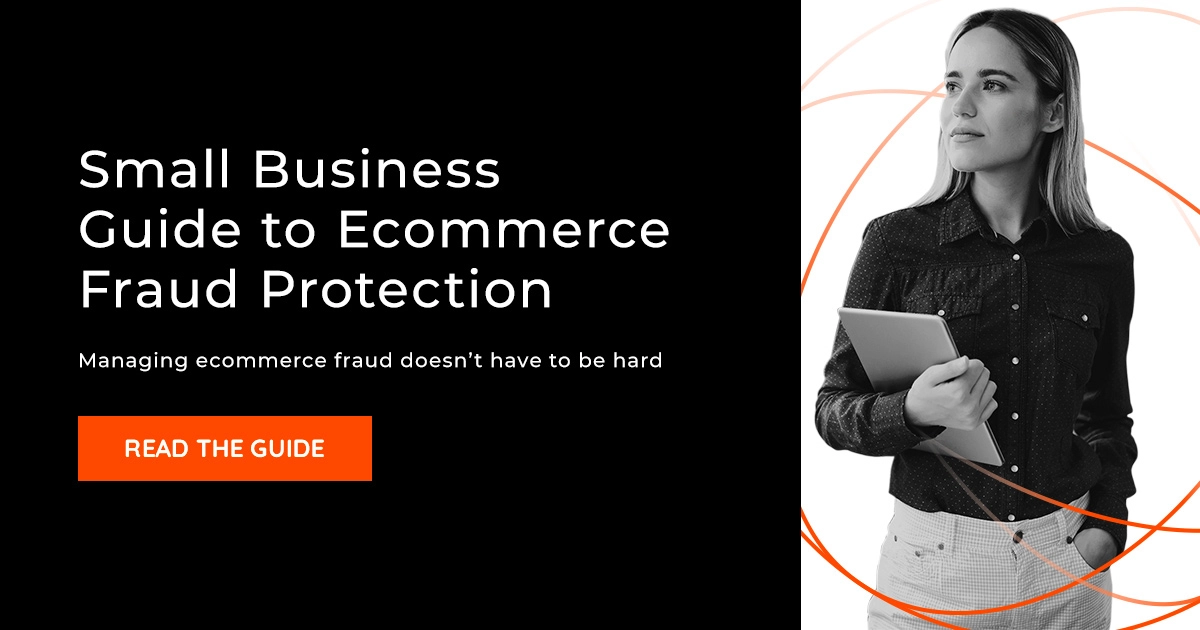Why a Secondary Fraud Review Is Worth the Wait
“We don’t have time to manually review transactions.” It’s a common claim among ecommerce businesses, but the reality is they can’t afford not to. Yes, customers are fickle and will leave your site at the first sign of friction, but a secondary review isn’t meant to leave good customers waiting for their transactions to be accepted. Used correctly, this fraud prevention tactic not only saves your customers and your business from being the victims of fraud, but it can also be the key to more accurate, faster transaction approvals.
How Companies Typically Handle Fraud
Companies tend to use one of several tactics to prevent fraud on their own.
Some combine restrictive fraud filters, which either decline or flag potentially “bad” orders, with an additional review of those flagged orders by a trained fraud analyst or whoever is available. Other companies lean on purely automatic solution to screen transactions. And another subset of businesses only review orders one by one.
All of these scenarios present issues for those businesses. These approaches to fraud prevention can be resource-intensive and time-consuming. Fraud filters and purely automatic solutions create a false sense of security because companies aren’t necessarily “seeing” the fraud.
Plus, all of these approaches impact customers.
What about the customer’s experience?
Great customer service is about more than processing orders quickly, especially in today’s ecommerce marketplace. Consumers have grown accustomed to superior service and an online experience that rivals what they would get in a store. That expectation will only continue.
At the same time, customers expect companies to protect them from being the victims of fraud. In fact, our original research shows that 74% of customers whose data was used for fraud on a site will never shop with that retailer again.
Ecommerce businesses are between a rock and a hard place when it comes to balancing fraud and customer experience.
Adding insult to injury, if your fraud filters and automated rules are too strict, you’re undoubtedly declining orders from good customers. With the ecommerce explosion during the pandemic, more novice online shoppers have entered the market. New online customers tend to be clumsy and act like fraudsters – but they aren’t. Declining good customers, especially new customers who aren’t so sure about online shopping, creates an even bigger problem for ecommerce businesses.
The cost of false declines
With ecommerce businesses estimated to lose more than $343 billion to ecommerce fraud over the next five years, it’s no wonder they’re using fraud filters and automated rules that deny suspicious-looking transactions. It seems like a solid plan, until retailers learn that these fraud prevention solutions are actually declining a significant number of legitimate transactions and reducing their approval rates.
“When you automatically decline orders, you do lower chargeback rates. But your approval rate could be much lower than you realize. It’s difficult to know how true approval rates are when you don’t know how many customers left your website because they couldn’t pay.”

Salvador Tello, ClearSale Global Enterprise Presales
False declines cost companies more than chargebacks or fraud itself. Why? Because the cost of a fraudulent transaction is the loss of that product and shipping costs. But 40% of customers will never again shop with a company that declined their order, and 34% will take their displeasure on social media. The cost of a false decline is losing the lifetime value of a customer and anyone else they tell about their experience.
So, what does any of this have to do with secondary reviews, as we call them?
When companies are strategic about which orders they give a second look, they can prevent false declines, improve their approval rate and more effectively prevent fraud.
What’s important is how you use the secondary review.
How to Effectively Utilize the Secondary Review
The secondary review is an extremely valuable fraud prevention tactic when it’s used as part of a multifaceted approach. It also has some timesaving and customer service benefits, when utilized correctly. Here’s how to implement the secondary review to realize those benefits:
Choose your team wisely
Make sure the people reviewing orders understand fraud, fraud trends and what details to look for that indicate fraud. At ClearSale, our team of fraud analysts has experience identifying and fighting fraud all over the world, including in some of the most high-risk regions.
Create a customer-centric process
Your secondary review process should be focused on the cardholder’s customer experience. If it’s a valid customer, they should be made to feel like you’ve got their back and are protecting their interests. For example, our call script is designed to read like a white-glove service follow-up, where customers are made to feel like they are VIPs. It further helps us gather the information we need to confirm their identities and parse out fraudsters.
Leverage what you learn
It may sound counterintuitive, but taking the time to conduct secondary reviews of suspect transactions can actually improve machine learning algorithms. Algorithms are based on historical data, learning both from experience and from the data that humans (who also learn from experience) provide.
So, what happens if there’s a completely unprecedented event (like COVID-19) or an emerging fraud threat that the AI solution hasn’t yet been taught how to resolve? AI-only systems may flag transactions as “high risk.” If all these risky transactions are simply denied and not analyzed, the system won’t learn and improve … and will continue to repeat the same mistakes.
At ClearSale, we feed data insights and new fraud indicators into the algorithm, helping it “learn” how to identify those fraud patterns as they come up. The result is more accepted orders, more accurate declines and higher approval rates.
Include secondary review in a hybrid approach
Just using secondary review isn’t realistic, especially during holidays and other peak seasons. In fact, secondary review should be the last hurdle for suspicious orders.
At ClearSale, we use a hybrid approach that leverages the benefits of approving almost all valid transactions and declining clearly fraudulent transactions with precise accuracy. In fact, our AI-enabled technology uses an auto-approval algorithm that clears 97% of orders. Only about 3% of orders (at a maximum) are flagged for secondary review by our team of fraud analysts, who compile what they learn from those reviews and feed that intelligence into our approval algorithm to teach it to be even more accurate over time.
This allows us to deliver immediate decisions to our clients. In other words, we leverage secondary review for better accuracy and faster decisions – which actually improves the customer experience. And our clients see lower chargebacks, lower false declines and higher approval rates.
Secondary reviews help protect the rest of your customers who rely on you for safety and security when they’re shopping on your site. By following these tips, you can conduct secondary reviews in a relatively frictionless way that actually benefits your customers and your company.
“Secondary reviews turn false declines into approvals. If you want to increase your company’s acceptance rate and lower false declines, you have to include secondary review in your fraud prevention methodology. The impact could be as much as 20% to 25% of orders.”

Salvador Tello, ClearSale Global Enterprise Presales
Could our unique approach help you improve fraud protection and maximize sales? Download our “Fraud Protection Buyers Guide” to explore your options and ensure the fraud protection solution you choose is the one that will meet your needs.
 Rick Sunzeri
Rick Sunzeri


